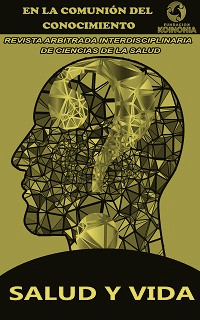Risk factors related to infections due to central venous catheter in critical newborns
DOI:
https://doi.org/10.35381/s.v.v7i2.2932Keywords:
Catheter-related infections, catheters, catheter obstruction, (Source: DeCS)Abstract
Objective: to analyze the risk factors related to central venous catheter infections in critical newborns. Method: Systematic review of 16 research papers, located in PubMed, Scielo, in Spanish and English. Results and conclusion: It is proposed that the risk factors in relation to central venous catheter infections, where it was identified that they are caused by health personnel and characteristics of newborns that require the need to place the central venous catheter at the time of admission to intensive care units, as it is a necessary invasive procedure, it is also a source of admission of mechanical and infectious complications.
Downloads
References
Chulle CM, Llerena RB, Jiménez EE, Vicharra J, Zeladita JA. Práctica de enfermería en la inserción y mantenimiento del catéter percutáneo en neonatos de un hospital público, Callao, 2010-2015 [Nursing practice in the insertion and maintenance of the percutaneous catheter in neonates of a public hospital, Callao, 2010-2015]. Ágora. Rev. Cient. [Internet].2020;07(01):1–6.
Agüero NS, Meza GE. Infecciones asociadas a catéter venoso central en pacientes internados en el servicio de pediatría del Hospital Central del Instituto de Previsión Social de abril del 2020 abril de 2021 [Central venous catheter-associated infections in patients admitted to the pediatric service of the Central Hospital of the Social Welfare Institute on April 2020 April 2021]. Rev. Cient. Cienc. Salud. [Internet].2021;3(4):78–84.
Cabrera DM, Cuba FK, Hernández R, Ruiz Y. Incidencia y factores de riesgo de infecciones del torrente sanguíneo asociadas a catéter central [Incidence and risk factors of central catheter-associated bloodstream infections]. Rev. Perú. Med. Exp. Salud Publica. [Internet].2020;38(1):634–646.
Sun SM, Chen YY. Risk Factors of Retained Central Venous Catheter Associated Bloodstream Infections in Hospitalized Patient. Hu Li Za Zhi 2018;65(5):68-79. doi:10.6224/JN.201810_65(5).09
Mahieu LM, De Muynck AO, Ieven MM, De Dooy JJ, Goossens HJ, Van Reempts PJ. Risk factors for central vascular catheter-associated bloodstream infections among patients in a neonatal intensive care unit. J Hosp Infect. 2001;48(2):108-116. doi:10.1053/jhin.2001.0984
Moon HM, Kim S, Yun KW, et al. Clinical Characteristics and Risk Factors of Long-term Central Venous Catheter-associated Bloodstream Infections in Children. Pediatr Infect Dis J. 2018;37(5):401-406. doi:10.1097/INF.0000000000001849
García A, Pizarro VC, Quirós G, Monge MJ, Arroyo A. Catéter venoso central y sus complicaciones [Central venous catheter and its complications]. Med. Leg. Costa Rica. [Internet].2020;37(1): 74-86.
Gorla BC, Jorge BM, Rueda A, Belmonte AC, Berchelli F. Catéter venoso central de corta duración: producción de vídeos educativos para el equipo de enfermería [Short-term central venous catheter: production of educational videos for the nursing team]. Esc. Anna Nery. [Internet].2021;26(2):2-8. Disponible en: http://old.scielo.br/pdf/ean/v26/en_1414-8145-ean-26-e20210392.pdf
Lona JC, Gómez LM, Cordero A, Cortés S, Quiles M, Pérez R, Pinto H. Incidencia y factores asociados a candidiasis invasiva en una unidad de cuidados intensivos neonatales de México [Incidence and factors associated with invasive candidiasis in a neonatal intensive care unit in Mexico]. Asoc. Esp. Ped. [Internet].2021;96(6):465554.
García A, Castellano JL,Fuenets C,Garcia JM,Fernandez JR,Gomez E, García V. Cinco pasos para la disminución de las infecciones relacionadas con la asistencia sanitaria en prematuros [Five steps to reduce healthcare-associated infections in preterm infants]. An.Pediatr.[Internet].2017;87(1):26–33.
Aguilar L, Abad F, Chávez M, La Rosa J, Loayza K, Ríos K. Utilización del catéter venoso central de inserción periférica en la Unidad de Cuidados Intensivos Neonatales del Instituto Nacional de Salud Del Niño Breña, 2017–2019 [Use of peripherally inserted central venous catheter in the Neonatal Intensive Care Unit of the Breña National Institute of Child Health, 2017–2019]. An. Fac. Med. [Internet]. 2022;83(3):1-5.
Domínguez J, Sarango Sandoya K, Salazar ZK. Infecciones producto de catéter venoso central y factores asociados en neonatos del Hospital José Carrasco Arteaga [Central venous catheter-related infections and associated factors in neonates at the José Carrasco Arteaga Hospital]. Rev.Inv.Sal. [Internet].2021;4(12):634–646.Disponible en: http://www.scielo.org.bo/pdf/vrs/v4n12/2664-3243-vrs-4-12-200.pdf
Herrera E, Ortunio M, Rivas A, Guevara H. Infecciones asociadas al cuidado de la salud en neonatos [Health care-associated infections in neonates]. Arch. Venez. Pueric. Pediatr. [Internet].2017;80(3): 88-91.
Padilla C, Montejano Benavent L, Monedero A, Borras MJ, Selfa A, Riera MJ. Factores de riesgo asociados a eventos adversos en recién nacidos portadores de catéteres centrales de inserción periférica [Risk factors associated with adverse events in newborns with peripherally inserted central catheters]. Enferm.Intens. [Internet].2021; 30(4):170–180.
Ruiz C, Jaramillo LI, Martínez LM, Villegas JD, Álvarez LF, Builes LN. Trombosis asociada a catéter venoso central [Central venous catheter-associated thrombosis]. Acta. Pediatr. Mex. [Internet].2021;42(5): 25159.
Bodenham A. Acceso vascular [vascular access]. Rev médica Clín Las Condes [Internet]. 2017;28(5):713–26.
Published
How to Cite
Issue
Section
License
Copyright (c) 2023 María José Pincay-Reyes, María Aidé Dávila-Quishpe, Vladimir Vega-Falcón, Nairovys Gómez-Martínez

This work is licensed under a Creative Commons Attribution-NonCommercial-ShareAlike 4.0 International License.
CC BY-NC-SA : Esta licencia permite a los reutilizadores distribuir, remezclar, adaptar y construir sobre el material en cualquier medio o formato solo con fines no comerciales, y solo siempre y cuando se dé la atribución al creador. Si remezcla, adapta o construye sobre el material, debe licenciar el material modificado bajo términos idénticos.
OAI-PMH: https://fundacionkoinonia.com.ve/ojs/index.php/saludyvida/oai.









